
Deutsch-Chinesische Enzyklopädie, 德汉百科
 Commonwealth of Nations
Commonwealth of Nations
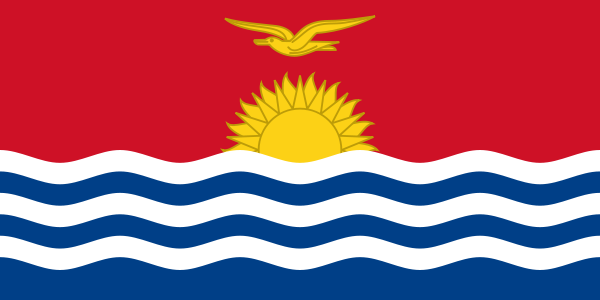
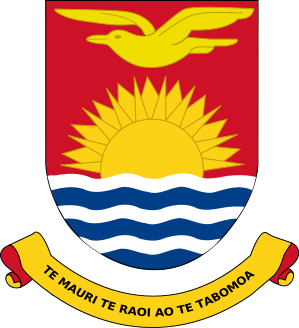
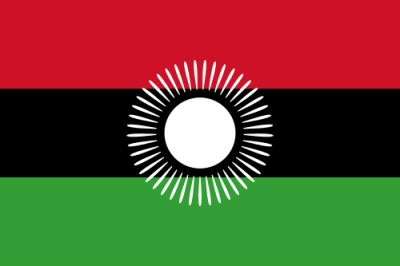

 *Mediterranean Sea
*Mediterranean Sea
 Commonwealth of Nations
Commonwealth of Nations

 Geography
Geography

 Geography
Geography
 ***IMF Developed countries
***IMF Developed countries
 IMF Developed countries
IMF Developed countries
 IMF Developed countries
IMF Developed countries
 TOP6
TOP6
 Malta
Malta

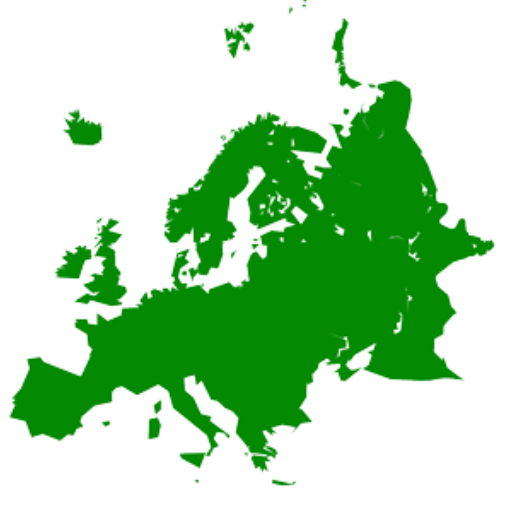 States of Europe
States of Europe
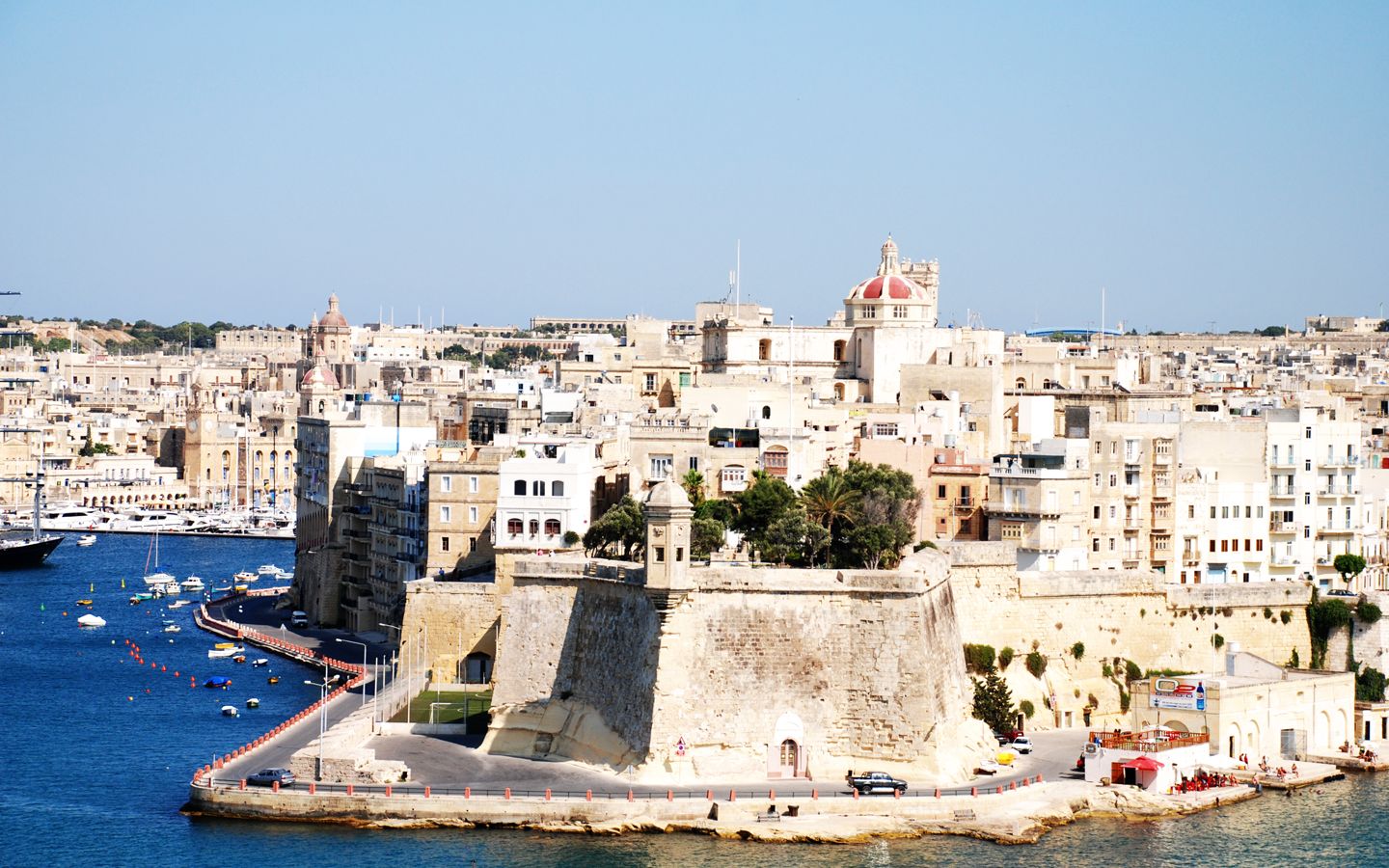
马耳他共和国(马耳他语:Repubblika ta' Malta,英语:Republic of Malta),通称马耳他,位于南欧的共和制的一个微型国家,首都瓦莱塔。是一个位于地中海中心的岛国, 由马耳他岛、戈佐岛、科米诺岛等几个岛屿组成。其中科米诺岛为鸟类保护区和自然保护区。素有“地中海心脏”之称,誉为“欧洲后花园”。官方语言为马耳他语和英语。国内教学基本以英语为主。马耳他亦是英联邦、欧盟成员国、申根区国家。 马耳他首都瓦莱塔是2018年欧洲文化中心。 马耳他经济以服务业和金融业为主,旅游业是马耳他主要的外汇来源。另外,马耳他社会保障体系较为完备,实行免费教育,免费医疗及退休保险制。这里也是多部如《特洛伊:木马屠城》、《神鬼战士》、《海边》、《大力水手》、《权力的游戏》等多部电影、电视剧的取景地。
Die Republik Malta (maltesisch Repubblika ta’ Malta, englisch Republic of Malta) ist ein südeuropäischer Inselstaat im Mittelmeer.
Die Republik Malta besteht aus den drei bewohnten Inseln Malta (einschließlich der Kleinstinsel Manoel), etwa 246 Quadratkilometer, Gozo (maltesisch: Għawdex), etwa 67 Quadratkilometer und Comino (maltesisch Kemmuna, etwa drei Quadratkilometer) sowie aus den unbewohnten Kleinstinseln Cominotto (maltesisch Kemmunett), Filfla, St. Paul’s Islands und Fungus Rock. Politisch gliedert sich die Hauptinsel Malta in zwei Regionen mit fünf Bezirken. Gozo und Comino bilden zusammen die dritte Region und den sechsten Bezirk. Bei den Römern hieß die jetzige Stadt Mdina melita – dieser Name geht wahrscheinlich auf die punische Bezeichnung für einen Zufluchtsort malet zurück –, was der Ursprung des heutigen Namens der Insel sein dürfte.
Mit rund 500.000 Einwohnern (2019) auf 316 Quadratkilometern Fläche gilt Malta als der Staat mit der fünfthöchsten Bevölkerungsdichte weltweit. Der Großteil der Bevölkerung konzentriert sich auf die Hauptstadtregion um Valletta, in dessen Ballungsraum rund 394.000 Einwohner leben.[4]
Im späten Neolithikum wurden auf dem Archipel bedeutende Megalithtempel errichtet, deren Überreste zum UNESCO-Welterbe zählen. Die maltesische Kultur wurde geprägt von den mediterranen Großreichen, etwa der Karthager, Römer, Byzantiner und Araber, zu denen die Inselgruppe in der Antike und dem Mittelalter gehörte; in Religion und Brauchtum ist sie vor allem vom römisch-katholischen Süditalien beeinflusst, sprachlich vom Arabischen. Eine eigenständige Entwicklung erfuhr sie ab 1530 unter der Herrschaft des souveränen Malteserordens. Ab 1814 britische Kolonie, erlangte Malta am 21. September 1964 die Unabhängigkeit. Am 1. Mai 2004 trat das Land der Europäischen Union bei, deren kleinster Mitgliedsstaat es seither ist.
Die Amtssprachen des Landes sind Maltesisch und Englisch; die Muttersprache der Malteser ist in der Regel das Maltesische, das auch als Nationalsprache Maltas gilt.
Am 1. Januar 2008 führte Malta den Euro ein. Vom 1. Januar bis zum 30. Juni 2017 hatte Malta erstmals die EU-Ratspräsidentschaft inne, 2018 war Valletta gemeinsam mit Leeuwarden (NL) Kulturhauptstadt Europas.
マルタ共和国(マルタきょうわこく、マルタ語: Repubblika ta' Malta、英語:Republic of Malta)、通称マルタ(Malta)は、南ヨーロッパの共和制国家。イギリス連邦および欧州連合(EU)の加盟国でもあり、公用語はマルタ語と英語、通貨はユーロ、首都はバレッタである。地中海中心部の小さな島国で、人口は約40万人。いわゆるミニ国家の一つ。
イタリアのシチリア島の南に位置し、面積は316km2で、東京23区の面積622.99km2の約半分の大きさである。
地中海のほぼ中央にあり、アフリカ大陸にも近い。このためカルタゴ、共和政ローマ時代に既に地中海貿易で繁栄し、その後一時イスラム帝国の支配に入ったこともある。それに抵抗して戦ったマルタ騎士団がこの地の名前を有名にした。小型犬のマルチーズの発祥の地であり、マルチーズの名はマルタに由来する。
Malta (/ˈmɒltə/,[11] /ˈmɔːltə/ (![]() listen); Maltese: [ˈmɐltɐ]), officially known as the Republic of Malta (Maltese: Repubblika ta' Malta), is a Southern European island country consisting of an archipelago in the Mediterranean Sea.[12] It lies 80 km (50 mi) south of Italy, 284 km (176 mi) east of Tunisia,[13] and 333 km (207 mi) north of Libya.[14] With a population of about 475,000[4] over an area of 316 km2 (122 sq mi),[3] Malta is the world's tenth smallest country in area[15][16] and fifth most densely populated sovereign country. Its capital is Valletta, which is the smallest national capital in the European Union by area at 0.8 km2 (0.31 sq mi). The official and national language is Maltese, which is descended from Sicilian Arabic that developed during the Emirate of Sicily, while English serves as the second official language.
listen); Maltese: [ˈmɐltɐ]), officially known as the Republic of Malta (Maltese: Repubblika ta' Malta), is a Southern European island country consisting of an archipelago in the Mediterranean Sea.[12] It lies 80 km (50 mi) south of Italy, 284 km (176 mi) east of Tunisia,[13] and 333 km (207 mi) north of Libya.[14] With a population of about 475,000[4] over an area of 316 km2 (122 sq mi),[3] Malta is the world's tenth smallest country in area[15][16] and fifth most densely populated sovereign country. Its capital is Valletta, which is the smallest national capital in the European Union by area at 0.8 km2 (0.31 sq mi). The official and national language is Maltese, which is descended from Sicilian Arabic that developed during the Emirate of Sicily, while English serves as the second official language.
Malta has been inhabited since approximately 5900 BC.[17] Its location in the centre of the Mediterranean[18] has historically given it great strategic importance as a naval base, with a succession of powers having contested and ruled the islands, including the Phoenicians and Carthaginians, Romans, Greeks, Arabs, Normans, Aragonese, Knights of St. John, French, and British.[19] Most of these foreign influences have left some sort of mark on the country's ancient culture.
Malta became a British colony in 1813, serving as a way station for ships and the headquarters for the British Mediterranean Fleet. It was besieged by the Axis powers during World War II and was an important Allied base for operations in North Africa and the Mediterranean.[20][21] The British Parliament passed the Malta Independence Act in 1964, giving Malta independence from the United Kingdom as the State of Malta, with Queen Elizabeth II as its head of state and queen.[22] The country became a republic in 1974. It has been a member state of the Commonwealth of Nations and the United Nations since independence, and joined the European Union in 2004; it became part of the eurozone monetary union in 2008.
Malta has had Christians since the time of Early Christianity, though was predominantly Muslim while under Arab rule, who tolerated Christians. Norman rulers expelled all Muslims who did not convert, and Aragonese rulers expelled unconverted Jews. Today, Catholicism is the state religion, but the Constitution of Malta guarantees freedom of conscience and religious worship.[23][24]
Malta is a popular tourist destination with its warm climate, numerous recreational areas, and architectural and historical monuments, including three UNESCO World Heritage Sites: Hypogeum of Ħal Saflieni,[25] Valletta,[26] and seven megalithic temples which are some of the oldest free-standing structures in the world.[27][28][29]
Malte (en maltais : Malta ; en anglais : Malta), en forme longue la République de Malte (en maltais : Repubblika ta' Malta ; en anglais : Republic of Malta), est un État insulaire d'Europe situé au milieu de la Méditerranée, à 93 kilomètres au sud de la Sicile. Il est constitué d'un archipel de huit îles, dont quatre sont habitées, et de plusieurs îlots et rochers. La capitale du pays est La Valette, établie sur l'île de Malte.
Sa localisation stratégique entre la Méditerranée occidentale et la Méditerranée orientale lui a valu les convoitises et l'occupation de nombreuses puissances au cours des âges. Malte a acquis son indépendance du Royaume-Uni le 21 septembre 1964. Elle est membre de l’Union européenne depuis le 1er mai 20045, ainsi que de la zone euro depuis le 1er janvier 20086.
Avec ses 316 km2 de superficie, c'est le plus petit État de l'Union européenne. Le pays compte 449 043 habitants en 2018. Sa densité de population est la plus élevée de l'Union européenne, avec 1 421 habitants au km2.
Malte possède une langue nationale, le maltais, et deux langues officielles, le maltais et l'anglais ; l'italien est également compris et pratiqué par de nombreux Maltais.
Malta, ufficialmente Repubblica di Malta (in maltese Repubblika ta' Malta, in inglese Republic of Malta), è uno stato insulare dell'Europa meridionale, nonché lo Stato membro più piccolo dell'Unione europea.
È un arcipelago situato nel Mediterraneo, nel canale di Malta, a 80 km dalla Sicilia, a 284 km dalla Tunisia e a 333 km dalla Libia, compreso nella regione geografica italiana. Con un'estensione di 315,6 km² è uno degli stati più piccoli e densamente popolati al mondo. La sua capitale è La Valletta e la città più abitata è Birchircara. L'isola principale è caratterizzata da un grande numero di cittadine che, insieme con la capitale, formano una conurbazione di 368 250 abitanti.
Il Paese ha due lingue ufficiali, il maltese e l'inglese. L'italiano, lingua ufficiale fino al 1934, è molto diffuso, parlato correttamente da più del 66% dei maltesi.[5] Durante il corso della storia, la posizione geografica di Malta ha dato grande importanza all'arcipelago, che ha subito l'avvicendarsi in sequenza di Fenici, Greci, Cartaginesi, Romani, Arabi, Normanni, Aragonesi, Cavalieri di Malta, Francesi e Inglesi.
Malta è internazionalmente conosciuta come località turistica, per lo svago e soprattutto per la cultura, dato che nel Paese si trovano ben tre siti dichiarati dall'UNESCO patrimonio dell'umanità: la capitale La Valletta, l'Ipogeo di Hal Saflieni e i templi megalitici. L'ingresso nell'Unione europea è avvenuto il 1º maggio 2004 e dal 1º gennaio 2008 è entrata a far parte dell'Eurozona. Malta è inoltre membro del Commonwealth.
Malta, oficialmente la República de Malta (en maltés: Repubblika ta' Malta; en inglés: Republic of Malta), es un país insular miembro de la Unión Europea, densamente poblado, compuesto por un archipiélago y situado en el centro del Mediterráneo, al sur de Italia, al oriente de Túnez y al norte de Libia. Debido a su situación estratégica, ha sido gobernado y disputado por diversas potencias en el transcurso de los siglos. Desde 1964 es independiente y en 2004 se adhirió a la Unión Europea.3
Malta es un popular destino turístico con su clima cálido, numerosas áreas recreativas y monumentos arquitectónicos e históricos, incluidos tres sitios del Patrimonio Mundial de la UNESCO: el Hipogeo de Hal Saflieni, La Valeta, y siete templos megalíticos que son algunas de las estructuras independientes más antiguas en el mundo. En 2018 tenía una población de 475 700 habitantes con una distribución de 1457 hab./km², la más alta densidad de población entre los países de la Unión Europea.
Ма́льта (мальт. и англ. Malta), Респу́блика Ма́льта (мальт. Repubblika ta' Malta, англ. Republic of Malta) — островное государство в Средиземном море, на Мальтийском архипелаге.
1 мая 2004 года Мальта стала членом Европейского союза.




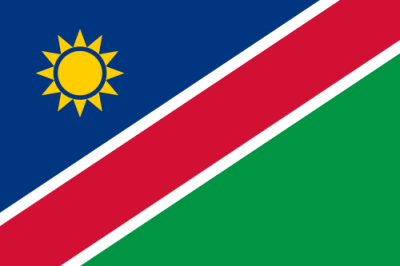
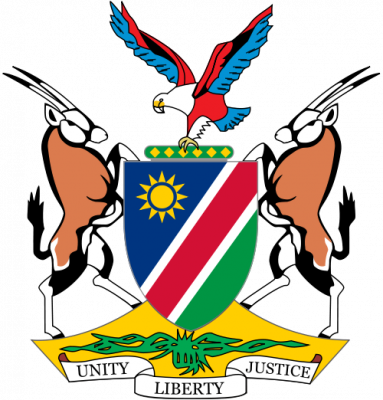
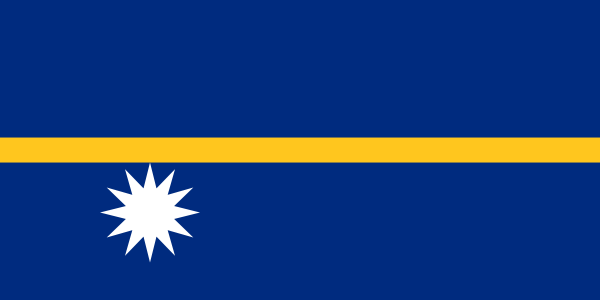
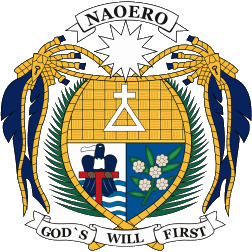
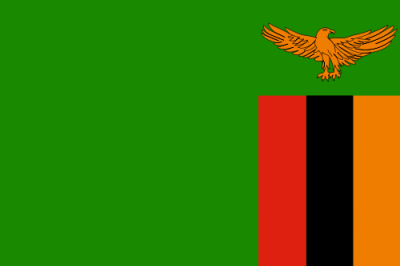





 Commonwealth of Nations
Commonwealth of Nations

 Geography
Geography

 Geography
Geography
 ***IMF Developed countries
***IMF Developed countries
 IMF Developed countries
IMF Developed countries
 IMF Developed countries
IMF Developed countries
 TOP4
TOP4
 Singapore
Singapore
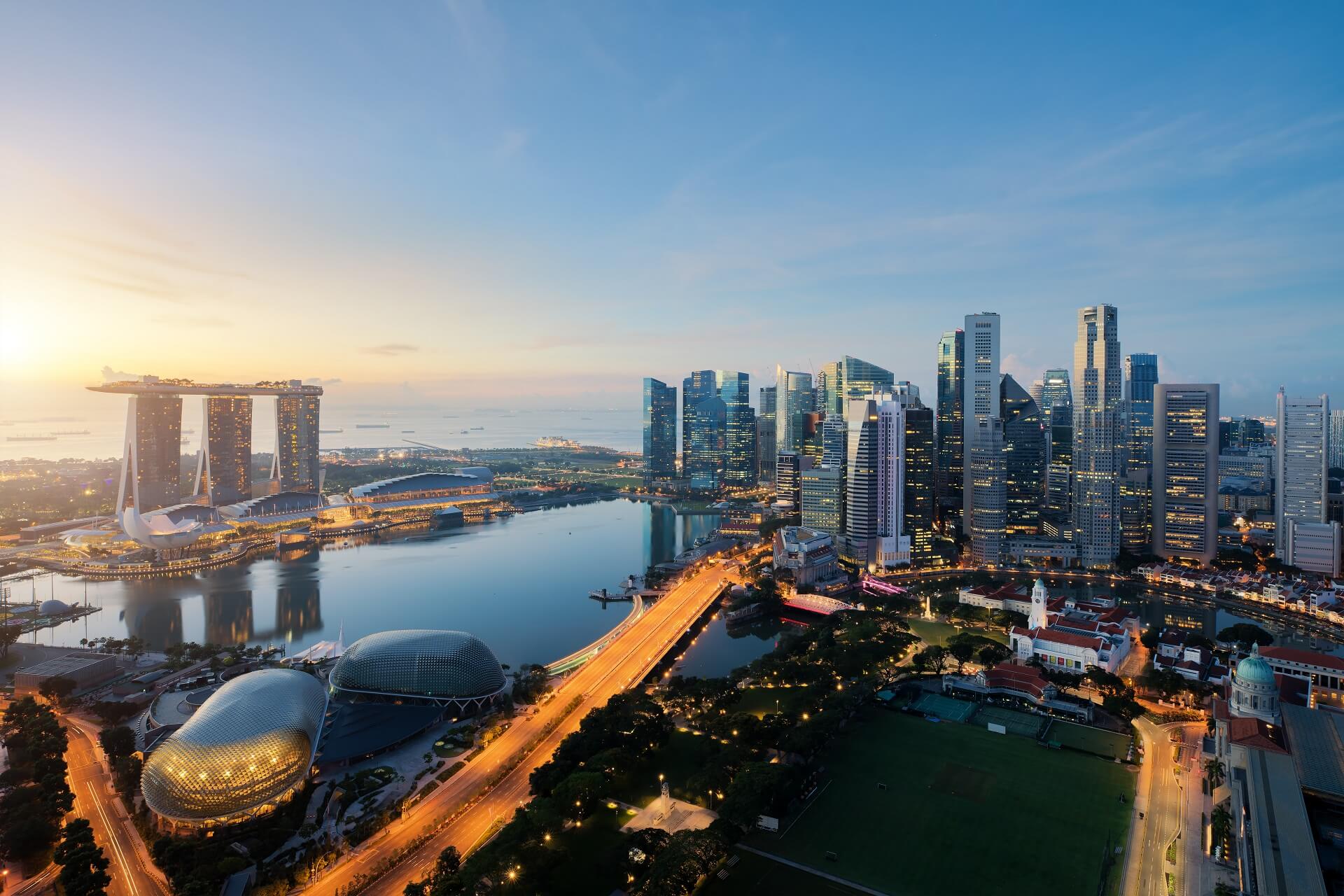
新加坡共和国(英语:Republic of Singapore;马来语:Singapura;泰米尔语:சிங்கப்பூர் குடியரச),通称新加坡,是东南亚中南半岛南端的一个城邦岛国、城市国家。该国位于马来半岛南端,扼守马六甲海峡最南端出口,其南面有新加坡海峡与印尼相隔,北面有柔佛海峡与西马来西亚相隔,并以新柔长堤与第二通道等这两座桥梁相连于新马两岸之间。新加坡的国土除了新加坡本岛之外,还包括周围所属岛屿,新加坡最大的外岛为德光岛。从新加坡独立以来,大规模的填海已经为新加坡增加了23%的面积,相等于增加了130平方公里。
1819年,任职于英国不列颠东印度公司的斯坦福·莱佛士与柔佛苏丹签订条约,获准在新加坡建立交易站和殖民地,经莱佛士的努力,逐渐发展成繁荣的转口港。由于地理位置特殊,新加坡在第二次世界大战以前一直是大英帝国在东南亚最重要的战略据点。1942年至1945年间,新加坡曾被日本占领三年半之久,其后回归英国管理,并从海峡殖民地独立出来,1959年成立自治邦,1963年加入马来西亚成为一个州,称为新加坡州(简称星州)。1965年8月9日,马来西亚国会以126票赞成、0票反对,同意将新加坡驱逐出联邦。新加坡共和国正式成立,李光耀为总理,尤索夫·伊萨为总统。新加坡被驱逐马来西亚后独立建国。
自1965年独立后,新加坡从穷困潦倒中,依靠着国际贸易和人力资本的操作,迅速转变成为富裕的亚洲四小龙之一,同时凭借着地理优势,新加坡也是亚洲重要的金融、服务和航运中心之一。教育素质良好的国民也是亚洲政治和科学文化的纽带,大多数的新加坡人都通晓至少两种语言,分别是英语以及自己的母语。新加坡是个多元文化种族的社会,也是全球最国际化的国家之一,所以主要由华人组成的新加坡并非为单一民族国家,而是和一部分马来人及印度人所组成的移民国家,其中华人文化以福建移民为大宗[6]。在国内居住的居民有38%为永久居民、持有工作签证的外籍劳工以及持有学生签证的学生,建筑业和服务业的外劳比例分别为80%和50%[7][8][9][10]。整个城市在绿化和环境卫生方面效果显著,故有花园城市之美称。
Singapur (amtlich Republik Singapur, englisch Republic of Singapore [ɹɪˈpʰʌb.lɪkʰ.əv.ˈsɪŋ.(g)ə.pʰɔː], malaiisch Republik Singapura, chinesisch 新加坡共和国, Pinyin Xīnjiāpō Gònghéguó, auch: 新加坡 [ɕin.tɕiɑ.pʰuɔ], Tamil சிங்கப்பூர் குடியரசு Ciṅkappūr Kudiyarasu) ist ein Insel- und Stadtstaat und der flächenmäßig kleinste Staat Südostasiens. Er ist Mitglied im Commonwealth of Nations.
Beim Index der menschlichen Entwicklung belegte Singapur 2018 den neunten Platz.[6] Singapur ist eines der reichsten Länder (und Städte) weltweit und gilt als eine der Städte mit den weltweit höchsten Lebenshaltungskosten.[7] Zudem zählt der Stadtstaat mit mehr als elf Millionen ausländischen Touristen im Jahr zu den zehn meistbesuchten Städten der Welt[8] und gilt neben Hongkong als wichtigster Finanzplatz Asiens. Singapur ist ein multiethnischer Staat, in dem Chinesen, Malaien und Inder die größten Bevölkerungsteile stellen.
シンガポール共和国(シンガポールきょうわこく、英語: Republic of Singapore、マレー語: Republik Singapura、簡体字: 新加坡共和国、繁体字: 新加坡共和國、タミル語: சிங்கப்பூர் குடியரசு)、通称シンガポールは、東南アジアに位置し、シンガポール島及び60以上の小規模な島々からなる共和制国家[4]。
同国は、北はジョホール海峡により半島マレーシアから、南はシンガポール海峡によりインドネシアのリアウ諸島州から各々切り離されている。同国は高度に都市化され、原初の現存植生はほとんどない。シンガポールの領土は、一貫して埋立てにより拡大してきた。
シンガポールは、教育・エンターテインメント・金融・ヘルスケア・人的資本・イノベーション・ロジスティクス・製造・技術・観光・貿易・輸送の世界的な中心である。多くの国際順位で格付けされており、最も「テクノロジー対応」国(WEF)、国際会議のトップ都市(UIA)、世界で最もスマートな都市である「投資の可能性が最も高い」都市(BERI)、世界で最も安全な国、世界で最も競争力のある経済、3番目に腐敗の少ない国、3番目に大きい外国為替市場、3番目に大きい金融センター、3番目に大きい石油精製貿易センター、5番目に革新的な国、2番目に混雑するコンテナ港湾。2013年以来、エコノミストはシンガポールを「最も住みやすい都市」として格付けしている[5][6][7][8]。
シンガポールは、すべての主要な格付け機関からAAAソブリン格付けを持つ、アジアで唯一の国であり、世界11か国のうちの1つである。シンガポール航空は2018年の「世界最高の航空会社」であり、世界的にはシンガポール港とチャンギ国際空港がそれぞれ「マリタイムキャピタル」と「ベスト空港」のタイトルを連続して獲得している[9][10]。
シンガポールは、1人当たりGDPが2番目に高く、国連人間開発指数で9位である、主権国にとってアジアで最高。これは、教育・医療・平均余命・生活の質・個人の安全・住宅などの主要な社会的指標に高く置かれており、人口の90%が家の所有者である。
Singapore (/ˈsɪŋ(ɡ)əpɔːr/ ( listen)), officially the Republic of Singapore, is a sovereign city-state and island country located in maritime Southeast Asia. Singapore lies about one degree of latitude (137 kilometres or 85 miles) north of the equator, and is situated off the southern tip of the Malay peninsula, and, by extension, the southernmost extremity of continental Eurasia. The island country is wedged between western Indonesia and peninsular Malaysia, sharing its southern maritime border with the Batam, Bintan, and Karimun archipelago of the former's Riau Islands province, and its northern, western, and eastern maritime borders with the latter's Johor state; it is additionally in the vicinity of Sumatra to its west and Borneo to its east. The island country is enveloped by the littoral waters of the Johore Strait to its north and the Singapore Strait to its south, and is geographically positioned within the confluence of the Indian and Pacific Oceans, being bounded by the Malacca Strait to its west and the South China Sea to its east. The country's territory, which is archipelagic, is composed of one main island, 63 satellite islands and islets, and one outlying islet, the combined area of which has increased by 25% since the country's independence as a result of extensive land reclamation projects.
listen)), officially the Republic of Singapore, is a sovereign city-state and island country located in maritime Southeast Asia. Singapore lies about one degree of latitude (137 kilometres or 85 miles) north of the equator, and is situated off the southern tip of the Malay peninsula, and, by extension, the southernmost extremity of continental Eurasia. The island country is wedged between western Indonesia and peninsular Malaysia, sharing its southern maritime border with the Batam, Bintan, and Karimun archipelago of the former's Riau Islands province, and its northern, western, and eastern maritime borders with the latter's Johor state; it is additionally in the vicinity of Sumatra to its west and Borneo to its east. The island country is enveloped by the littoral waters of the Johore Strait to its north and the Singapore Strait to its south, and is geographically positioned within the confluence of the Indian and Pacific Oceans, being bounded by the Malacca Strait to its west and the South China Sea to its east. The country's territory, which is archipelagic, is composed of one main island, 63 satellite islands and islets, and one outlying islet, the combined area of which has increased by 25% since the country's independence as a result of extensive land reclamation projects.
Throughout its millennia-long history, Singapore—historically known by the names Pulau Ujong, Temasek, and subsequently Singapura—was a maritime emporium that fell under the suzerainty of several successive Indianised and Islamicate Malay polities: initially a series of ancient to medieval Hindu-Buddhist thalassocratic empires, subsequently a medieval localised Hindu-Buddhist kingdom, and ultimately two medieval to early modern Islamic sultanates.[14][Note 8] The 1819 arrival of Stamford Raffles, a British colonial officer, and the subsequent establishment of a British East India Company trading post on the main island—then part of the Johor Sultanate—marked the genesis of modern Singapore. Five years later, the British and Dutch East India companies partitioned the Sultanate, with the British coercively wresting Singapore from the Sultan in the process, marking the cessation of indigenous rule over the island for the first time in its history. In 1826, Singapore was incorporated into the Straits Settlements, a pan-Malayan presidency of the Company with Penang as capital,[15][Note 9] and in 1830, the Settlements were annexed to British India as a residency, where they would be governed from the capital of Calcutta under two administrations—until 1858 under Company rule, and—following the Company's collapse in the wake of the 1857 Indian Rebellion—until 1867 under the successive British Raj. In 1867, the administration of the Settlements was transferred to London, bringing them under the direct control of the United Kingdom as a Malayan crown colony.[16][17][18]
From 1867 to the 1940s, Singapore, having taken over Penang as capital of the Settlements, grew into a thriving entrepôt and settler-colony under the auspices of the British Empire, attracting large numbers of non-indigenous settlers and sojourners from the region and beyond.[19] During the Second World War, Imperial Japan invaded and annexed Singapore, resulting in an interregnum of British colonial rule corresponding with a brief but bloody Japanese occupation from 1942 to 1945. Following Japan's surrender in 1945, Singapore was returned to British control; in 1946, the Straits Settlements were dissolved, and Singapore became a standalone crown colony. In 1959, following a protracted period of agitation against colonial rule, Singapore was granted limited autonomy; in 1963, it became fully emancipated from the British Empire upon its federation with the territories of the erstwhile British Malaya and British Borneo to form the new country of Malaysia.[Note 10] However, after two tumultuous years as a constituent state of the Malaysian Federation, marred by violent ethnoreligious strife and other intractable differences between indigenous and non-indigenous groups, Singapore was expelled in 1965, becoming the first country in modern history to gain independence against its will—although this narrative remains contentious.[Note 11] After early years of turbulence, the newly sovereign nation—viewed as a nonviable state by international observers due to its diminutiveness, geostrategic vulnerability, absence of natural resources, and lack of a hinterland—defied odds by rapidly developing and industrialising under the leadership of the inaugural People's Action Party to become a high-income economy and developed country within a single generation.
Singapore is a unitary parliamentary constitutional republic with a unicameral legislature that has been characterised by dominant-party rule since independence. It is considered a soft authoritarian technocratic state; the Economist Intelligence Unit rated Singapore a "flawed democracy" in 2019.[21] It is the only truly sovereign city-state in the world; it has its own currency and a well-funded military that is considered the most advanced in Southeast Asia.[22] The country is home to 5.6 million residents, 61% (3.4 million) of whom are Singaporeans; as a legacy of its historical nature as an entrepôt and settler-colony, modern Singapore is a pluralistic country with a racially, culturally, and religiously diverse citizenry,[23][24] with one indigenous ethnic group, the Malays, and two settler-descended ethnic groups, the Chinese and Indians, forming the historical and contemporary core of the citizen populace. As a reflection of this pluralism, multiracialism has been enshrined as a foundational principle of the state, and has shaped the country's politics and national policies. The country, which is Anglophone, has four official languages: English, Malay, Chinese, and Tamil; Malay, as the ancestral language of the country, is accorded protected status in the country's constitution as the national language, while English is the lingua franca, being spoken as a common tongue by the vast majority of Singaporeans.
Singapore is one of the five founding members of ASEAN, is the headquarters of the Asia-Pacific Economic Cooperation (APEC) Secretariat and Pacific Economic Cooperation Council (PECC) Secretariat,[25] is a member of the United Nations, World Trade Organization, East Asia Summit, Non-Aligned Movement, and the Commonwealth of Nations, and is a recurrent guest invitee to the annual G20 summit;[26] its outsized influence on global affairs, relative to its size, has lead to it being classified as a middle power.[27][28] The country is the most developed sovereign nation in Asia, being ranked 9th on the UN Human Development Index, and has the 7th highest GDP per capita in the world.[29][30] It is also considered by Transparency International to be the most incorruptible nation in Asia, and the fifth most incorruptible worldwide. Singapore is placed highly in key social indicators: education, healthcare, quality of life, personal safety and housing, with a home-ownership rate of 91%. Singaporeans enjoy one of the world's longest life expectancies and one of the lowest infant mortality rates in the world.[31] As a city, Singapore is classified as an Alpha+ global city, and is the only country in Asia with an AAA sovereign rating from all major rating agencies. It is a major financial and shipping hub, consistently ranked the most expensive city to live in since 2013, and has been identified as a tax haven.[32][33] Singapore is also a popular tourist destination, with well-known landmarks such as the Merlion, Marina Bay Sands, Gardens by the Bay, the Jewel, the Orchard Road shopping belt, the resort island of Sentosa, and the Singapore Botanic Gardens, the only tropical garden in the world to be honoured as a UNESCO World Heritage Site.[34][35]
Singapour, en forme longue la république de Singapour (en anglais : Singapore et Republic of Singapore, en chinois : 新加坡 (Xīnjiāpō) et 新加坡共和国 (Xīnjiāpō Gònghéguó), en malais : Singapura et Republik Singapura, en tamoul : சிங்கப்பூர் (Ciṅkappūr) et சிங்கப்பூர் குடியரசு) (Ciŋkappūr Kudiyarasu), est une cité-État d’Asie du Sud-Est. Sa superficie est de 719,1 km2. Elle comprend 63 îles, dont la principale est Pulau Ujong (584,8 km2). Cette île est très densément urbanisée, mais la végétation luxuriante – même en plein centre-ville – a valu à Singapour le surnom de « ville jardin ». Cette abondance de verdure découle en partie d'un climat équatorial, uniformément chaud et orageux tout au long de l'année. Sa densité de population est la plus élevée d'Asie et la deuxième sur le plan mondial.
L'État de Singapour est situé à l'extrême sud de la péninsule Malaise, dont il est séparé au nord par le détroit de Johor, et borde au sud le détroit de Singapour. Il est connu et souvent montré en exemple pour son extraordinaire réussite économique. Après l'indépendance de l'Empire britannique en 1958, le rattachement à la Malaisie en 1963, puis l'indépendance en 1965, Singapour a su devenir, avec très peu de ressources naturelles et des problèmes socio-économiques importants – émeutes raciales, chômage massif, difficultés de logement et d'accès à l'eau –, l'un des pays les plus développés et les plus prospères du monde, en termes d'économie, d'éducation, de santé, de sécurité et d'urbanisme. La ville, cité souveraine, est un réduit chinois au cœur même du monde malais : la population est majoritairement composée de Chinois (74,3 %). De cette confrontation ethnique sont nés en partie les troubles qui ont accéléré son retrait de la Malaisie, le 9 août 19656.
Dans les années 1980, le pays fait partie, avec Hong Kong, la Corée du Sud et Taïwan, des quatre dragons asiatiques, des États en transition et au développement économique effréné. En 2011, Singapour est le troisième pays au monde en termes de produit intérieur brut à parité de pouvoir d'achat (PPA) par habitant après le Qatar et le Luxembourg7. Plaque tournante commerciale et financière entre la zone Pacifique et l'Europe, la ville doit son essor à sa situation maritime exceptionnelle à l'extrémité Est du détroit de Malacca, qui lui vaut le surnom de : Cité marchande aux confins de l'Orient. Elle possède le deuxième port au monde (après Shanghai) en termes d'exportations et de trafic maritime. La population singapourienne dispose d'un très haut niveau de vie et la Cité-État est souvent surnommée La Suisse d'Asie8. En 2009, Singapour affichait ainsi la plus forte concentration de millionnaires rapportés à la population totale devançant Hong Kong (Chine), la Suisse, le Qatar et le Koweït9.
Présentant une stabilité politique remarquable, Singapour est considéré aujourd'hui comme une « démocratie autoritaire » ou « dictature bienveillante », avec la même famille au pouvoir depuis l'indépendance. La cité-État est donc considérée comme un pays pratiquant le libéralisme économique sans le libéralisme politique.
Le centre-ville est situé dans le sud de l'île de Pulau Ujong, à l'embouchure de la rivière Singapour (Singapore River). Il comprend un centre d'affaires qui a fait de la ville la quatrième place financière au monde, ainsi que différents quartiers ethniques (chinois, malais, et indien) et une grande zone commerciale autour d'Orchard Road.
Singapore (AFI: /sinɡaˈpore/[5]), ufficialmente Repubblica di Singapore (in malese Republik Singapura; in inglese Republic of Singapore; in cinese 新加坡共和国, Xīnjiāpō Gònghéguó; in tamil சிங்கப்பூர் குடியரசு, Ciŋkappūr Kudiyarasu), è una città-Stato del sud-est asiatico, situata sull'estrema punta meridionale della penisola malese, 152 km a nord dell'equatore. Si sviluppa su un arcipelago formato da 58 isole, la più grande e principale delle quali è l'isola di Singapore che ospita la metropoli. A nord Singapore è separata dalla Malaysia dallo Stretto di Johor, a sud è separata dalle indonesiane isole Riau dallo Stretto di Singapore.
La città-Stato è il quarto principale centro finanziario del mondo[6] ed è una delle principali città cosmopolite del globo, con un importante ruolo nel commercio internazionale e nella finanza. Il suo porto è tra i primi cinque per attività e traffico su scala mondiale.[7]
Singapore è un Paese con una lunga storia di immigrazione. Ha una popolazione variegata e gli oltre 5 milioni di abitanti sono composti prevalentemente da cinesi, malesi, indiani e altre discendenze di asiatici ed europei.[8]
Il 42% della popolazione è straniero, qui presente per lavoro o studio. I lavoratori stranieri costituiscono il 50% del settore dei servizi.[9][10]
Singapore è il secondo Paese più densamente popolato del mondo dopo il Principato di Monaco e nel 2009 ha raggiunto la più alta concentrazione di milionari in rapporto alla popolazione, davanti a Hong Kong, Svizzera, Qatar e Kuwait.[11]
Singapur, oficialmente República de Singapur (en inglés: Republic of Singapore; en chino: 新加坡共和国 [Xīnjīapō Gònghéguó]; en malayo: Republik Singapura; y en tamil: சிங்கப்பூர் குடியரசு [Siṅkappūr Kuṭiyarasu]), es un país soberano insular de Asia, formado por sesenta y tres islas, cuya forma de gobierno es la república parlamentaria.
Su territorio se divide en cinco consejos de desarrollo comunitario. Su capital es la ciudad de Singapur, por lo que Singapur se considera una ciudad-estado. Está situado al sur del Estado de Johor en la península de Malasia y al norte de las islas Riau de Indonesia, separada de estas por el estrecho de Singapur. Con 697 km²,1 es el país más pequeño del Sudeste Asiático. Su territorio ha crecido constantemente con tierras ganadas al mar.
Desde el siglo II d. C., cuando se establecieron allí los primeros humanos, la isla de Singapur ha formado parte de varios imperios regionales. El moderno Singapur fue fundado en 1819 por el británico Thomas Stamford Raffles como puesto comercial de la Compañía Británica de las Indias Orientales con el permiso del Sultanato de Johor. El Reino Unido obtuvo la soberanía sobre la isla en 1824 y esta pasó a ser una de las Colonias del Estrecho británicas en 1826. Ocupada por los japoneses durante la Segunda Guerra Mundial, Singapur declaró su independencia del Reino Unido en 1963 como un estado más de Malasia mediante un referéndum de incorporación, de la que se separó dos años después. Desde entonces la ciudad-estado ha prosperado rápidamente y se ha ganado la distinción de ser uno de los «cuatro tigres asiáticos».
Singapur es una de las principales ciudades globales y uno de los centros neurálgicos del comercio mundial, contando con el tercer mayor centro financiero y el segundo puerto que más mercancías mueve. Su economía globalizada y diversificada depende especialmente del comercio y del sector manufacturero. En términos de paridad de poder adquisitivo, Singapur es el tercer país con mayor renta per cápita del mundo, además de figurar entre los primeros países en las listas internacionales de educación, sanidad, transparencia política y competitividad económica.
Políticamente, Singapur es una república parlamentaria multipartidista con un gobierno parlamentario unicameral inspirado en el sistema Westminster británico. El Partido de Acción Popular ha ganado todas las elecciones desde que el país obtuvo la independencia. Sin embargo, las libertades civiles y de expresión están sumamente restringidas y se dan casos de censura por parte del Gobierno, por lo que está considerado como un país con rasgos tanto democráticos como autoritarios.4 La población, unos cinco millones de habitantes, es muy diversa: alrededor de dos millones son de origen extranjero y entre los nativos, el 75 % son chinos y el resto minorías de malayos, indios o euroasiáticos. Esta diversidad tiene su reflejo en los cuatro idiomas oficiales del país, que son el inglés, el chino, el malayo y el tamil, así como en las políticas gubernamentales que promueven el multiculturalismo.5
Singapur es uno de los miembros fundadores de la Asociación de Naciones del Sudeste Asiático y ha sido sede del secretariado del Foro de Cooperación Económica Asia-Pacífico, además de formar parte de la Cumbre de Asia Oriental, del Movimiento de Países No Alineados y de la Mancomunidad de Naciones. El rápido desarrollo del país lo ha llevado a tener una influencia importante en los asuntos internacionales y a que algunos analistas lo consideren una potencia intermedia.67
Республика Сингапу́р (англ. Republic of Singapore; малайск. Republik Singapura, ريڤوبليق سيڠاڤورا; кит. трад. 新加坡共和國, упр. 新加坡共和国, пиньинь: Xīnjiāpō Gònghéguó, палл.: Синьцзяпо Гунхэго; там. சிங்கப்பூர் குடியரசு Ciŋkappūr Kudiyarasu) — город-государство, расположенный на островах в Юго-Восточной Азии, отделённых от южной оконечности Малаккского полуострова узким Джохорским проливом. Граничит с султанатом Джохор, входящим в состав Малайзии, и с провинцией Острова Риау, входящей в состав Индонезии.
Площадь Сингапура составляет 725,7 км² (2019 год), она постепенно увеличивается благодаря программе намыва территории, действующей с 1960-х годов. В настоящее время государство Сингапур состоит из 63 островов. Самые крупные из них — Сингапур (главный остров), Убин, Теконг-Бесар, Брани, Сентоса, Семакау и Судонг. Высшая точка — холм Букит-Тимах (163,3 м).
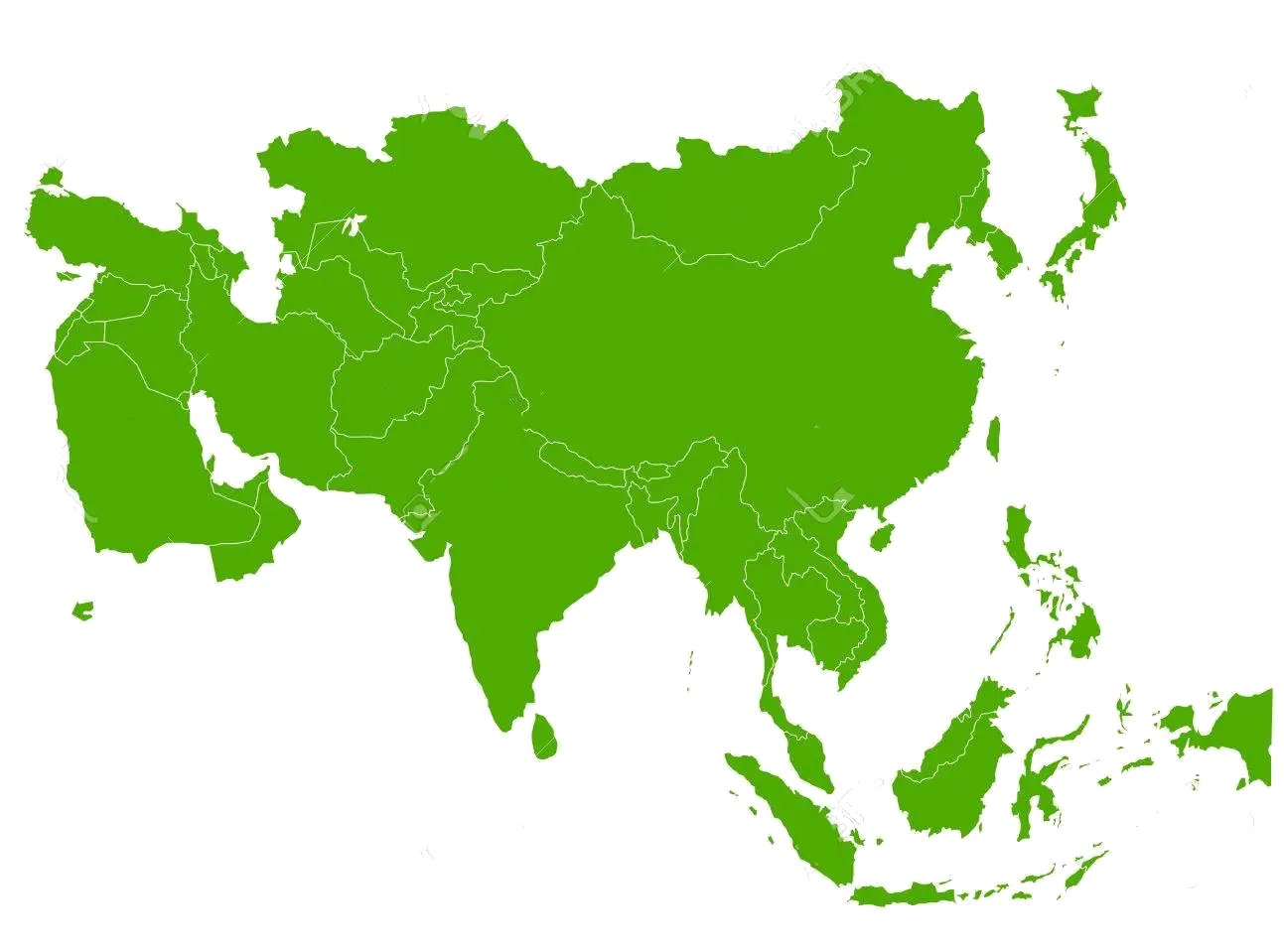 States of Asia
States of Asia


 European Union
European Union

